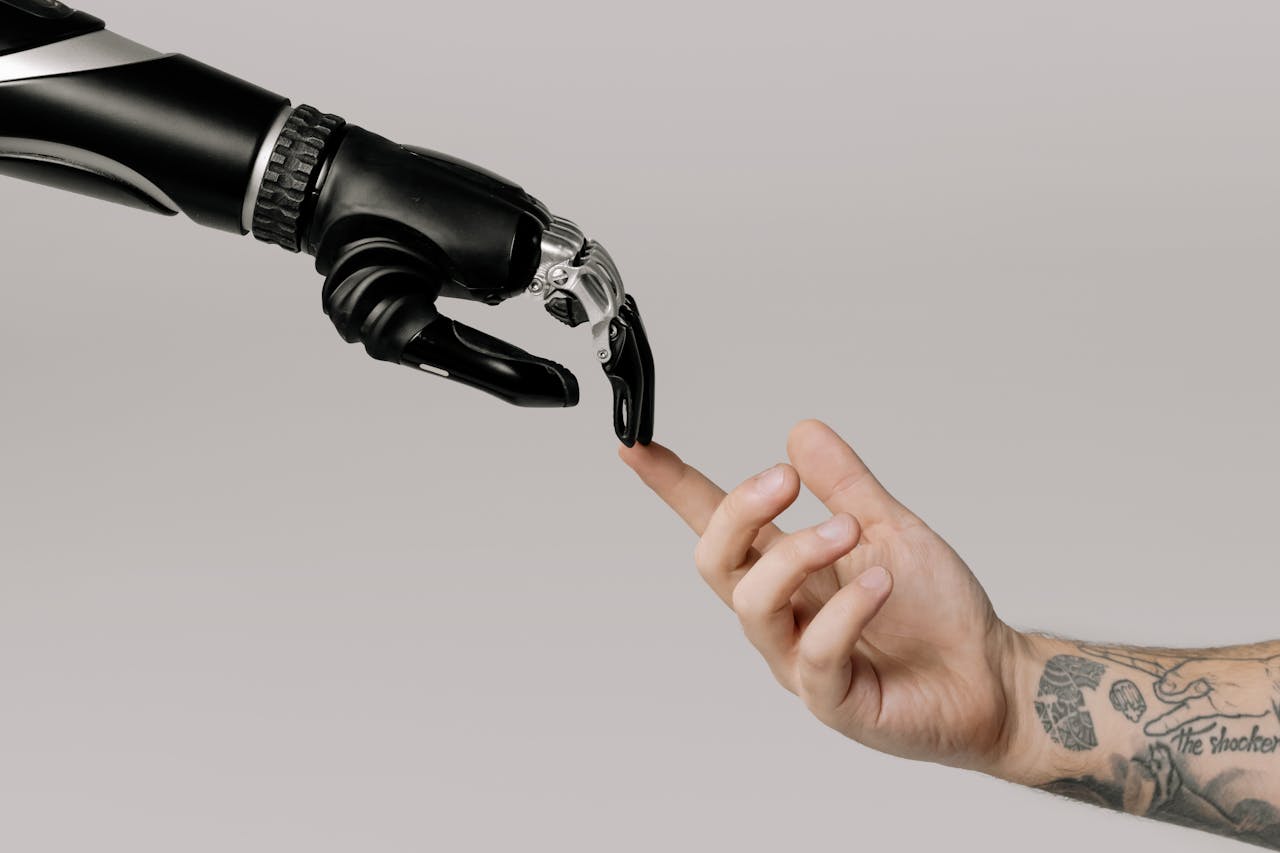Introduction
Artificial intelligence has moved beyond theoretical discussions to become an integral part of both our personal lives and workplace environments. From the moment we wake up to automated alarms on our smart devices, to the AI‑powered tools that streamline repetitive tasks at work, intelligent systems surround us. This article explores the practical impact of AI on daily life and work, highlighting real‑world applications, measurable productivity gains, ethical considerations, and the trends shaping the future of human‑AI collaboration.
Real‑World Applications of AI in Daily Life
AI Personal Assistants
Digital assistants such as Siri, Alexa, and Google Assistant have become household fixtures. They help us manage calendars, set reminders, send messages, and even control smart appliances with voice commands. By handling routine requests and anticipating user needs, these AI personal assistants save time and reduce cognitive load, freeing us to focus on more meaningful activities.
Smart Home & IoT
Smart home devices leverage AI to learn our routines and preferences. Thermostats automatically adjust temperature based on occupancy patterns, intelligent lighting systems adapt brightness and color temperature to our daily rhythms, and AI‑enabled security cameras distinguish between familiar faces and strangers. This seamless integration of AI into the Internet of Things enhances comfort, boosts energy efficiency, and strengthens home security.
Personalized Media & Entertainment
Streaming platforms and news services use AI algorithms to analyze user behavior and recommend content tailored to individual tastes. Whether it’s a curated playlist on your favorite music app or a movie suggestion on a streaming service, these systems reduce decision fatigue and increase engagement by surfacing options you’re likely to enjoy. Personalized recommendations turn passive consumption into an interactive experience.
Health & Wellness Tracking
Wearable devices and health apps employ AI to monitor vital signs, track activity levels, and analyze sleep patterns. Advanced machine‑learning models detect anomalies in heart rate or sleep quality, alerting users to potential health issues before symptoms appear. By providing real‑time feedback and personalized insights, AI‑powered wellness tools empower individuals to take proactive steps toward better health.
Transportation & Navigation
Real‑time traffic prediction and route optimization algorithms guide us around congestion and construction, shaving minutes off daily commutes. Ride‑hailing platforms use AI to match drivers and passengers efficiently, while early‑stage autonomous vehicle prototypes demonstrate how machine vision and decision‑making models can enhance road safety. From public transit scheduling to navigation apps, AI continually refines how we travel.
Transforming the Workplace: AI at Work
Automating Routine Tasks
Robotic Process Automation (RPA) and AI‑driven bots handle time‑consuming tasks such as data entry, invoice processing, and customer support triage. By automating these repetitive functions, organizations reduce errors, accelerate turnaround times, and reallocate human effort to strategic initiatives that require creativity and critical thinking.
Enhancing Decision‑Making with Data Analysis
AI analytics platforms process vast datasets to uncover hidden patterns and generate predictive insights. Business leaders use these insights for strategic planning, demand forecasting, and risk management. With AI‑backed decision support, teams can make data‑driven choices faster, adapt to market changes, and gain a competitive edge.
AI in Collaboration & Communication
Integrated AI features in collaboration tools offer automated meeting summaries, real‑time language translation, and intelligent drafting assistance for emails and documents. These capabilities streamline communication across global teams, break down language barriers, and ensure that critical information is captured accurately and shared efficiently.
AI Agents & Workflow Orchestration
Advanced AI agents can autonomously execute multi‑step workflows on behalf of users. For example, an AI agent might schedule meetings, generate performance reports, and update project management boards without manual intervention. By orchestrating complex processes, these intelligent agents boost team productivity and allow professionals to focus on higher‑value work.
AI and Employee Skills Evolution
As AI systems assume routine responsibilities, employees are encouraged to develop complementary skills—critical thinking, emotional intelligence, and creative problem‑solving—that machines cannot replicate. Organizations that invest in training and upskilling foster a culture of continuous learning and adaptability, preparing their workforce for the AI‑augmented future.
Measuring Impact: Productivity, Efficiency, and Quality of Life
Quantifying Time Savings & Productivity Gains
By automating mundane tasks, AI tools free up significant time. Professionals report spending fewer hours on administrative duties, translating into higher output and improved job satisfaction. This reclaimed time can be redirected toward strategic projects, innovation, and professional development.
User Satisfaction and Engagement
Tailored AI experiences enhance user satisfaction by delivering relevant content and streamlined interactions. Whether it’s a faster support resolution via chatbots or a personalized news feed that surfaces topics of genuine interest, AI‑driven personalization keeps users engaged and loyal.
Ethical, Security, and Trust Considerations
Privacy & Data Security
With AI systems processing sensitive personal data, robust security measures and privacy‑first architectures are essential. On‑device AI and edge computing architectures process information locally, reducing exposure to centralized breaches and enhancing user control over data.
Algorithmic Bias & Fairness
AI models trained on biased or unrepresentative data can perpetuate discrimination. It is critical to use diverse datasets, conduct regular bias audits, and implement fairness‑aware algorithms to ensure equitable outcomes for all individuals.
Transparency & Explainability
As AI plays a larger role in decision‑making, stakeholders demand clarity on how models arrive at their conclusions. Explainable AI techniques—such as interpretable model architectures and clear decision‑path visualizations—help build trust with users and satisfy regulatory requirements.
Maintaining E‑E‑A‑T in AI Content
For topics that impact health, finance, or public welfare, demonstrating Experience, Expertise, Authoritativeness, and Trustworthiness is vital. Clearly attribute AI‑generated insights, provide transparent methodology notes, and include expert author bios to uphold credibility.
Future Outlook: Emerging Trends in AI for Life and Work
Generative AI & Creative Applications
Generative models are revolutionizing content creation by producing text, images, and even music. These tools accelerate brainstorming, help draft marketing copy, and offer design prototypes, enabling creative professionals to experiment and iterate at unprecedented speed.
AI at the Edge & Decentralized Intelligence
Edge AI moves computation to local devices—smartphones, wearables, and IoT sensors—reducing latency, preserving privacy, and cutting bandwidth usage. This shift enables real‑time applications in healthcare diagnostics, autonomous vehicles, and industrial monitoring without constant cloud connectivity.
Human‑AI Collaboration & Augmentation
The most impactful AI implementations focus on collaboration rather than replacement. By combining human judgment with machine‑driven efficiency, organizations can tackle complex challenges, explore new ideas, and deliver richer experiences than either could achieve alone.
Conclusion
Artificial intelligence continues to weave itself into the fabric of daily life and professional workflows. Its practical applications—from AI personal assistants in our homes to automated agents in our offices—deliver measurable efficiency gains, personalized experiences, and innovative capabilities. Yet, realizing AI’s full potential requires thoughtful attention to ethics, transparency, and human‑centered design. By embracing responsible AI strategies and fostering human‑AI collaboration, we can unlock lasting benefits that enhance productivity, well‑being, and trust in an increasingly intelligent world.




1 thought on “The Practical Impact of AI on Daily Life & Work: Real‑World Applications and Future Outlook”